How Saharan dust can influence health all the way in Florida
Bacterial blooms could cause disease in humans and coral
Every so often in the Florida Keys, where coral reefs teem with marine life, an orange haze coats the sunset in the horizon – a fog of Saharan dust that wafts directly from Africa.
The desert dust settles on the ocean and provides nutrients to tiny bacteria. Perhaps unfortunately, some bacteria use those nutrients to multiply exponentially, and in turn a subset of those bacteria might increase disease risk for beach-goers, divers, and fishermen alike.
Vibrio is a genus of bacteria that is ubiquitous in coastal environments where rivers meet the sea. Some species are pathogenic and, when ingested, can cause watery diarrhea, fever, and abdominal pain, also known as vibriosis. A different freshwater Vibrio, V. cholerae, is responsible for the ongoing cholera outbreak in Yemen - the epidemic is expected to affect one million people by the end of 2017.
Another species, commonly known as Vibrio fischeri, lives in symbiosis with bobtail squid, and via bioluminescence, the bacteria help the squid camouflage in moonlight.
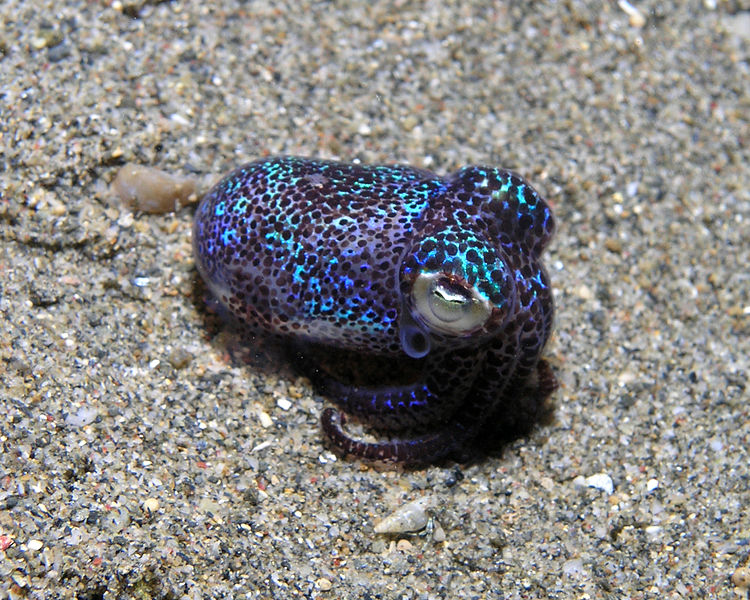
Bobtail squid
But the majority of Vibrio contribute to nutrient cycles by recycling nutrients, like dissolved organic carbon in the ocean, and making it more available to other members of the ocean food web. That is, until an opportunity comes their way.
The atmospheric dust, traveling from the Saharan desert and pulsing into the Caribbean, serves as extra fuel for Vibrio. The dust contains nutrients – such as iron, nitrogen, and phosphorous – that bacteria use to multiply. A study, published last May in the Proceedings of the National Academy of Sciences, found that when these dust storms reach the Florida Keys, Vibrio bacteria exponentially increase in abundance within 24 hours. This may be due to Vibrio’s unique ability to rapidly respond to nutrient pulses more effectively than most other bacteria.
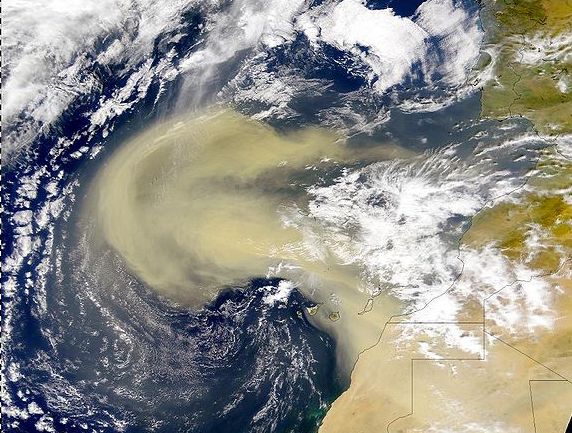
Miami bound
NASA
For the study, scientist Jason Westrich and his colleagues at the University of Georgia, Florida State University, and the US Geological Survey, visited Florida and Barbados during the summers of 2013 and 2014 to study Vibrio in the context of dust storms. To help determine when a pulse of dust would make it to his location, Westrich used NASA satellites and models that measure dust aerosol depths as a proxy measurement for the amount of dust in the air.
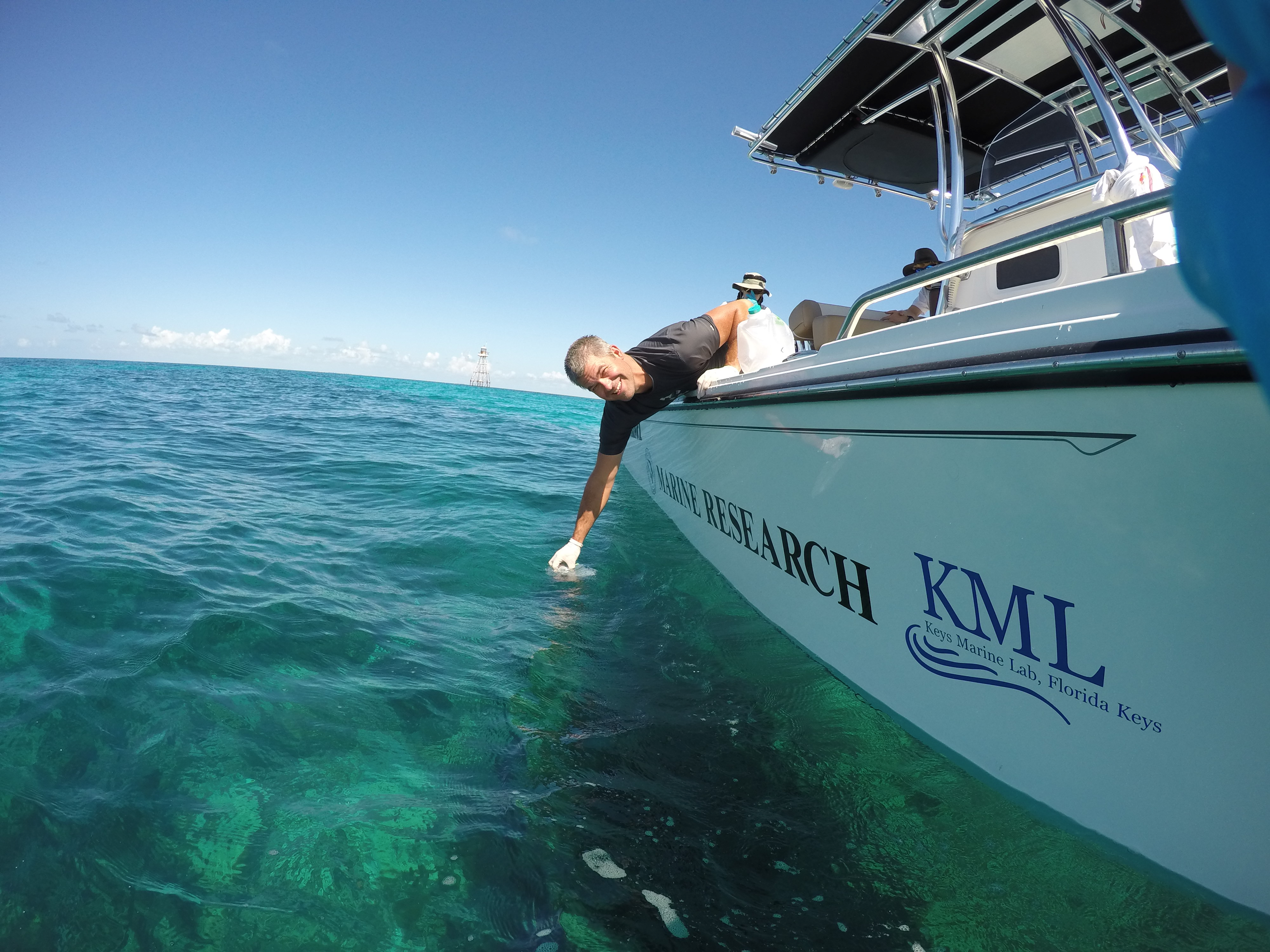
Westrich at work
Maite Ghazaleh Bucher
Then, Westrich and his colleagues set out clean collection bottles, petri plates with Vibrio-selective media, and filled the boat with gas – and they held their breath. As soon as the model signaled an incoming dust pulse, the team took off toward the haze to collect samples from Florida reef waters. With a lot of preparation and some luck, they collected data on three different occasions, July 2013, July 2014, and August 2014. On these occasions, they saw a surprising 30-fold increase in the number of Vibrio bacteria in the water column within 24 hours after the arrival of Saharan dust.
Collecting environmental bacterial samples is difficult because the environment is extremely variable. Winds may be too strong, water temperature may vary, and salinity fluctuates between summers. To reduce variables and gain clear results, Westrich and his colleagues also used an experimental approach. They simulated Saharan dust deposition in marine surface water by running miniature versions of marine environments, or microcosms. Each microcosm housed Vibrio alginolyticus, a species commonly found in Florida Keys reefs. Microcosms were then spiked with different doses of source material from Saharan dust in Morocco. Similar to what Westrich observed in the environment, the abundance of V. alginolyticus increased up to 11 times that of the control experiment (i.e. a microcosm of V. alginolyticus not dosed with dust) within 18-24 hours.
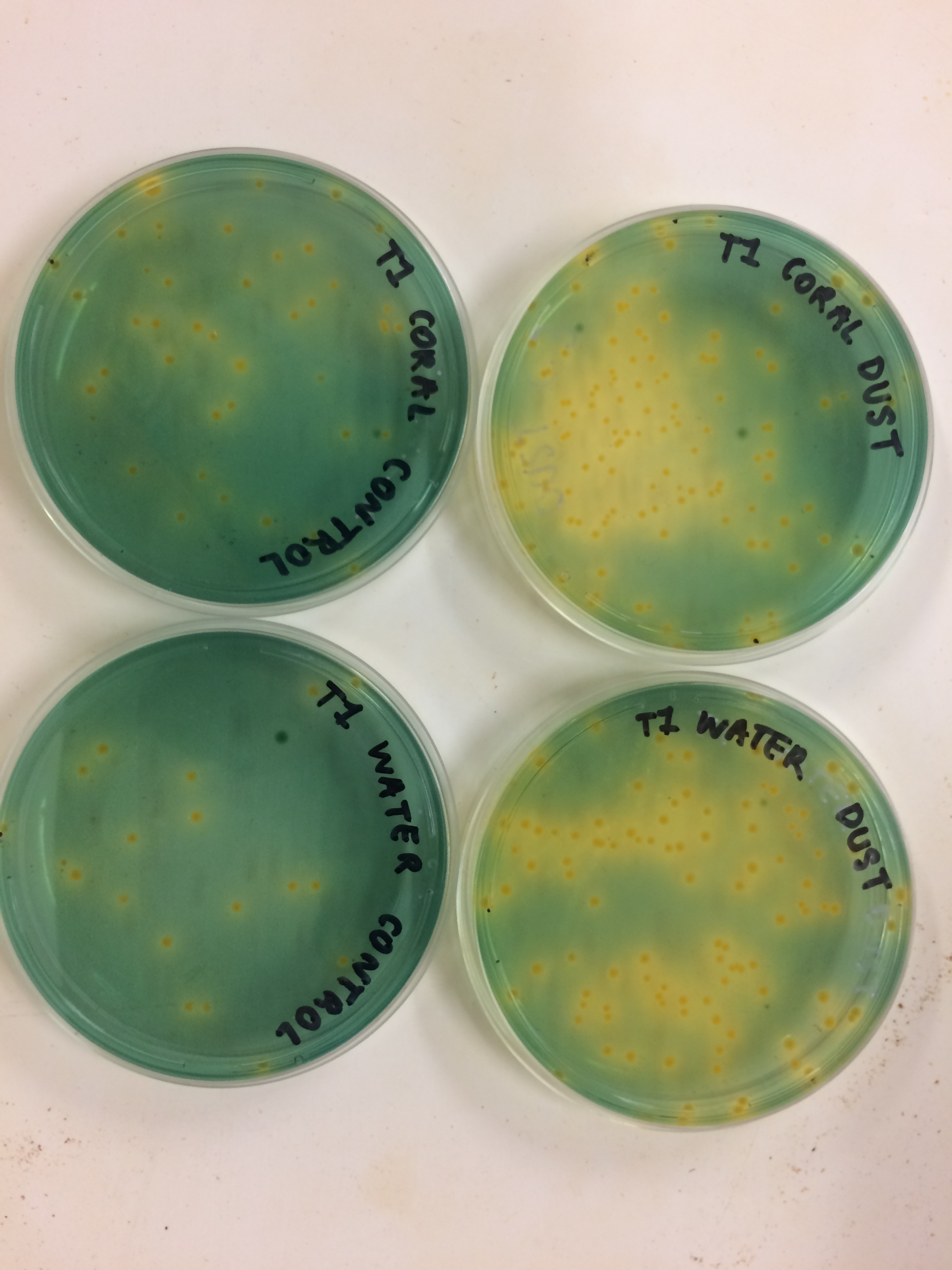
Bacterial blooms
Jason Westrich
In a similar experiment, scientists observed the abundance of V. cholerae increase up to 23 times that of the control cases. The experiment results, along with results observed in the reef waters, have a direct importance to people: V. alginolyticus and V. cholerae are known to cause seawater-associated wound infections and cholera, respectively.
The increase in nutrients brought in to the Florida reefs via Saharan dust storms could cause an increase in the number of pathogenic strains of Vibrio. To avoid getting infected, beach-goers, divers, and fishermen should take precaution during hazy days and keep an eye on beach watch advisories.
Scientists at the University of Georgia, such as Erin Lipp and myself, are also investigating the relationship between these dust storms and diseases for nonhumans, especially corals. The complex structure of coral reefs are created by animals called corals, which form large calcium-carbonate skeletons. Reefs form natural fisheries that create jobs for fishermen and the tourist industry. Reefs also shield shorelines from storms and changing seas, by serving as natural breakers that slow waves and prevent erosion.
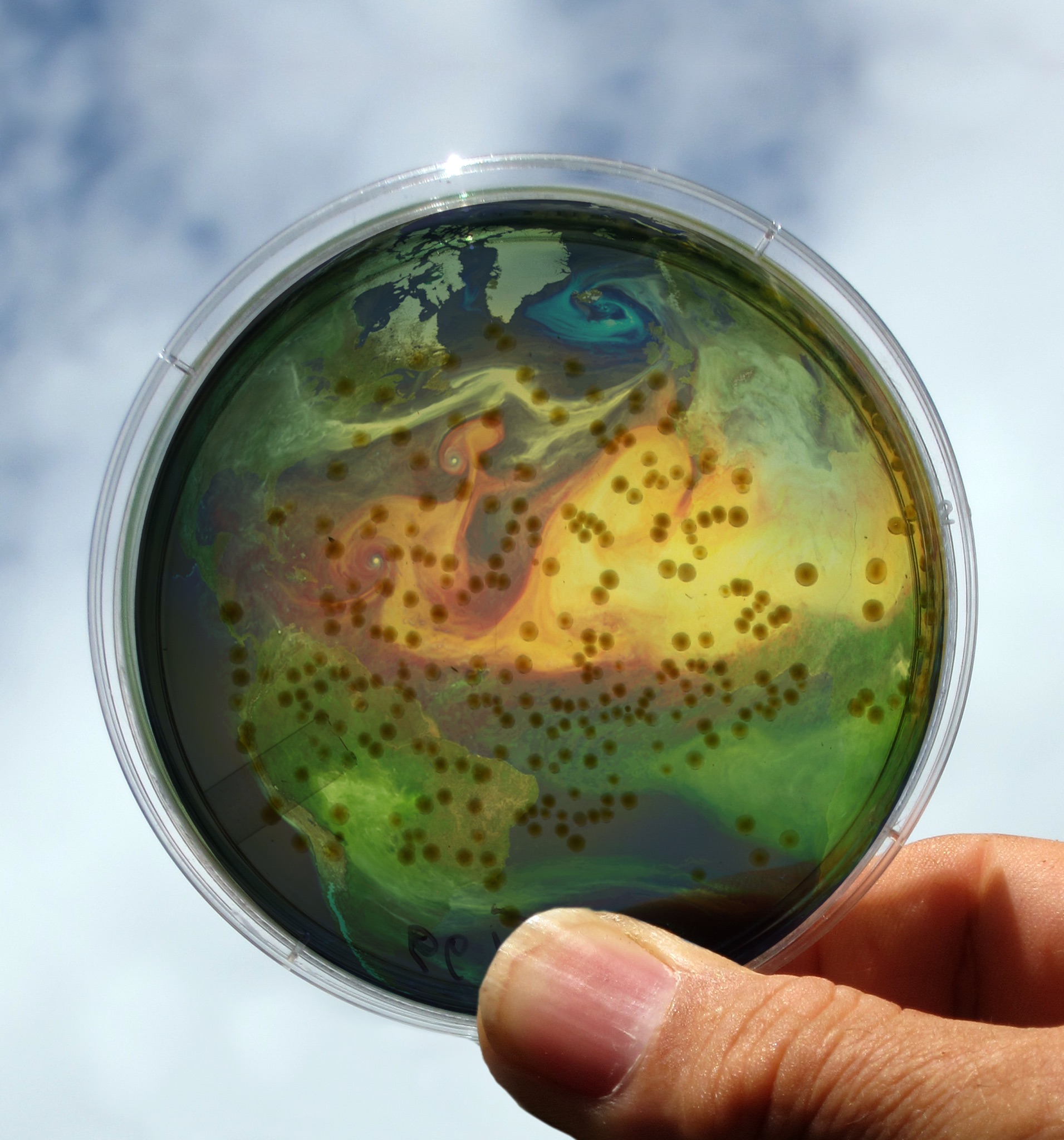
Vibrio in miniature
Randy Ramsey
The increase in nutrients brought in to the Florida reefs via Saharan dust storms could cause an increase in the number of pathogenic strains of Vibrio, such as Vibrio corallyticus, that have been implicated in coral disease. Signs of coral disease vary: boulder corals get dark spots, branching coral shows white bands, and brain corals show black bands, to give a few examples. The dust storms could either cause an increase in a bacterial strain that directly causes coral disease, or, we hypothesize, the Vibrio blooms could throw off the balance of healthy bacteria living inside the coral.
From tiny ocean microbes to entire coral reef ecosystems and transoceanic dust storms, it's all connected. Dust from the Sahara, the largest hot desert on earth, affects microscopic life off the coast of Florida, which in turn influences the health of humans and corals alike. With changing patterns in climate, some researchers worry that Saharan dust storms may be more frequent or more intense, posing greater threats to public and ecosystem health.
You can support a healthier planet by eating more plant-based meals, walking to work, speaking up during local elections and buying local foods. With these simple tasks – a lot of preparation and maybe some luck – we can, perhaps, collectively tame the dust storms that cause Vibrio blooms.
Peer Commentary
Feedback and follow-up from other members of our community
Carrie McDonough
Oceanography
Colorado School of Mines
As changes in precipitation rates due to climate change continue to increase Saharan dust transport, could you comment on some of the other ways large swaths of the ocean might be affected? It's my understanding that dust deposition can act as a pretty important source of nutrients to oligotrophic (nutrient-poor) areas of the remote open ocean. Is there any evidence you're aware of that increased dust deposition could spark more primary production in these environments, causing increases in carbon drawdown?
Good point: dust can definitely act as an important source of nutrients to other areas of the ocean. other areas that could be affected could be off the coasts of China and Australia. Patricia Yager here at the University of Georgia is studying some of those areas, specifically the oligotrophic, open water areas that see seasonal nutrient flux.
I can’t comment on primary production since I study microbes, but one of our collaborators on our dust grant is looking at chlorophyll measurements before, during, and after dust events. It does seem that phytoplankton could take advantage of the increase in nutrients when Saharan dust comes in. Still processing that data though 😊